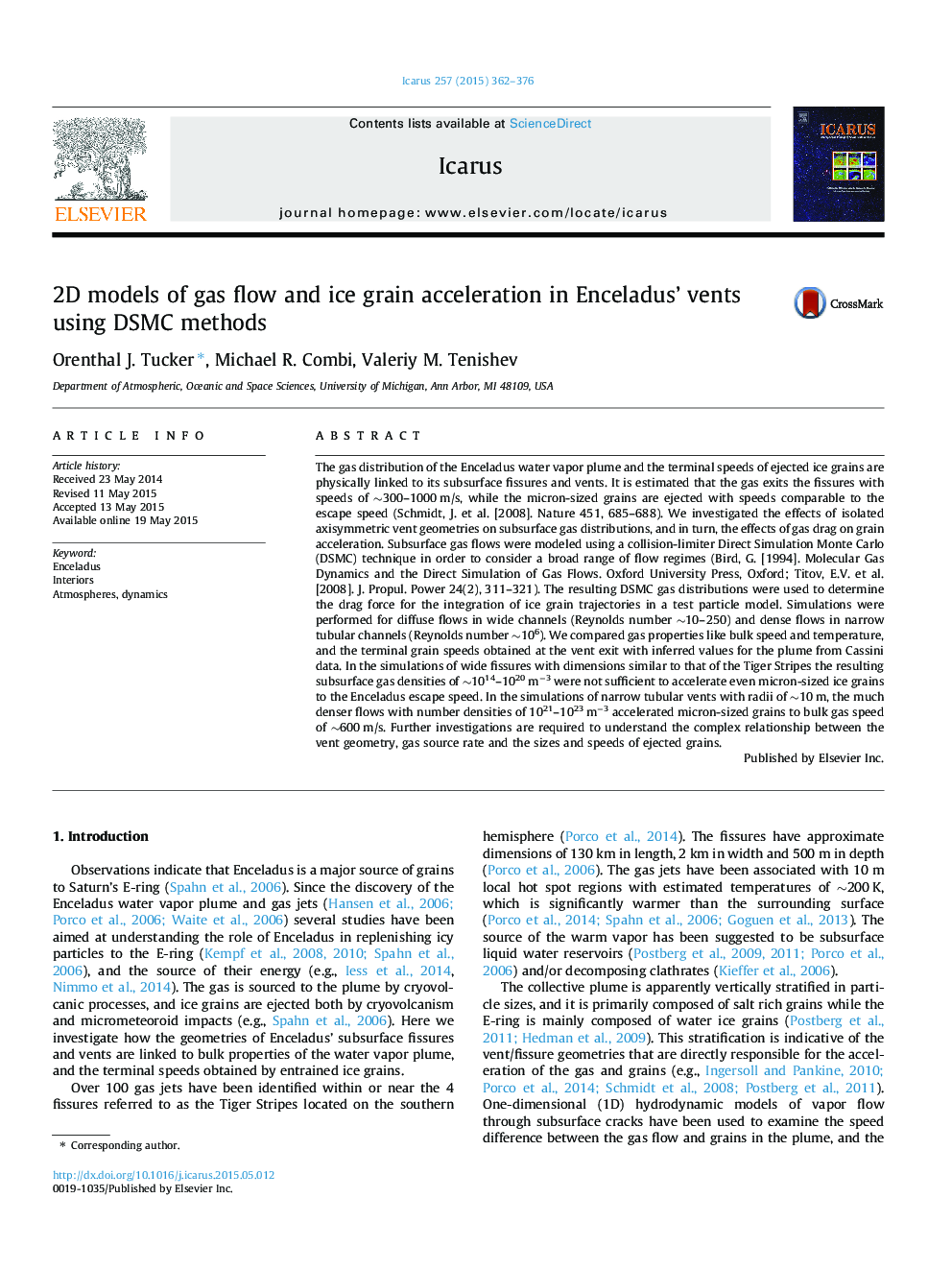| کد مقاله | کد نشریه | سال انتشار | مقاله انگلیسی | نسخه تمام متن |
|---|---|---|---|---|
| 8136176 | 1523533 | 2015 | 15 صفحه PDF | دانلود رایگان |
عنوان انگلیسی مقاله ISI
2D models of gas flow and ice grain acceleration in Enceladus' vents using DSMC methods
دانلود مقاله + سفارش ترجمه
دانلود مقاله ISI انگلیسی
رایگان برای ایرانیان
موضوعات مرتبط
مهندسی و علوم پایه
علوم زمین و سیارات
علوم فضا و نجوم
پیش نمایش صفحه اول مقاله

چکیده انگلیسی
The gas distribution of the Enceladus water vapor plume and the terminal speeds of ejected ice grains are physically linked to its subsurface fissures and vents. It is estimated that the gas exits the fissures with speeds of â¼300-1000Â m/s, while the micron-sized grains are ejected with speeds comparable to the escape speed (Schmidt, J. et al. [2008]. Nature 451, 685-688). We investigated the effects of isolated axisymmetric vent geometries on subsurface gas distributions, and in turn, the effects of gas drag on grain acceleration. Subsurface gas flows were modeled using a collision-limiter Direct Simulation Monte Carlo (DSMC) technique in order to consider a broad range of flow regimes (Bird, G. [1994]. Molecular Gas Dynamics and the Direct Simulation of Gas Flows. Oxford University Press, Oxford; Titov, E.V. et al. [2008]. J. Propul. Power 24(2), 311-321). The resulting DSMC gas distributions were used to determine the drag force for the integration of ice grain trajectories in a test particle model. Simulations were performed for diffuse flows in wide channels (Reynolds number â¼10-250) and dense flows in narrow tubular channels (Reynolds number â¼106). We compared gas properties like bulk speed and temperature, and the terminal grain speeds obtained at the vent exit with inferred values for the plume from Cassini data. In the simulations of wide fissures with dimensions similar to that of the Tiger Stripes the resulting subsurface gas densities of â¼1014-1020Â mâ3 were not sufficient to accelerate even micron-sized ice grains to the Enceladus escape speed. In the simulations of narrow tubular vents with radii of â¼10Â m, the much denser flows with number densities of 1021-1023Â mâ3 accelerated micron-sized grains to bulk gas speed of â¼600Â m/s. Further investigations are required to understand the complex relationship between the vent geometry, gas source rate and the sizes and speeds of ejected grains.
ناشر
Database: Elsevier - ScienceDirect (ساینس دایرکت)
Journal: Icarus - Volume 257, 1 September 2015, Pages 362-376
Journal: Icarus - Volume 257, 1 September 2015, Pages 362-376
نویسندگان
Orenthal J. Tucker, Michael R. Combi, Valeriy M. Tenishev,